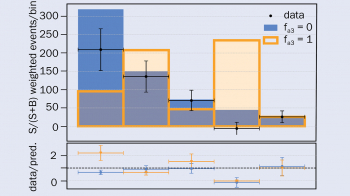By Giuliano Panico and Andrea Wulzer
Springer
This book provides a description of a composite Higgs scenario as possible extension of the Standard Model (SM). The SM is, by now, the established theory of electroweak and strong interactions, but it is not the fundamental theory of nature. It is just an effective theory, an approximation of a more fundamental theory, which is able to describe nature under specific conditions.
There are a number of open theoretical issues, such as: the existence of gravity, for which no complete high-energy description is available; the neutrino masses and oscillation; and the hierarchy problem associated with the Higgs boson mass (why does the Higgs boson have so small a mass? Or, in other words, why is it so much lighter than the Planck mass?).
Among the possible solutions to the hierarchy problem, the scenario of a composite Higgs boson is a quite simple idea that offers a plausible description of the experimental data. In this picture, the Higgs must be a (pseudo-) Nambu–Goldstone boson, as explained in the text.
The aim of this volume is to describe the composite Higgs scenario, to assess its likelihood of being a model that is actually realisable in nature – to the best of present-day theoretical and experimental understanding – and identify possible experimental manifestations of this scenario (which would influence future research directions). The tools employed for formulation of the theory and for the study of its implications are also discussed.
Thanks to the pedagogical nature of the text, this book could be useful for graduate students and non-specialist researchers in particle, nuclear and gravitational physics.









